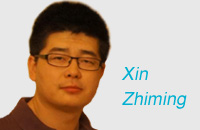Lessons from Nobel Prize winners
By Li Yang (chinadaily.com.cn) Updated: 2014-10-09 18:02Not all Nobel laureates make their findings and inventions at prestigious universities or institutes. The success story of one Nobel Prize in physics winner proves that junior researchers in plain posts can also make important scientific breakthroughs, says an article in Beijing News. Excerpt:
Isamu Akasaki and Hiroshi Amano of Japan and Japanese-born US scientist Shuji Nakamura won the 2014 Nobel Prize in Physics for their inventions of blue light-emitting diodes, a new energy efficient and environmentally friendly light source.
Although Shuji Nakamura is a professor at the University of California, Santa Barbara now, he was only an ordinary technician for a small company in Japan when he made the important invention that brought him the Nobel Prize.
But the patents of his inventions belonged to the company. He only got 20,000 yen ($185) as payment for his creation. Shuji Nakamura sued the firm in 2001. The court finally ruled that the company had to pay him 800 million yen as compensation. Unhappy with the result, he openly called on Japanese researchers to emigrate to the United States. He became an American citizen in 1999.
Koichi Tanaka, a Japanese Nobel laureate in chemistry in 2002, was also a researcher when he made his inventions.
Shuji Nakamura and Koichi Tanaka’s success is a big challenge to Japanese society and academic circles, which are highly hierarchical.











